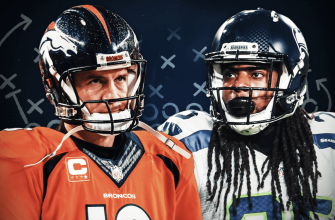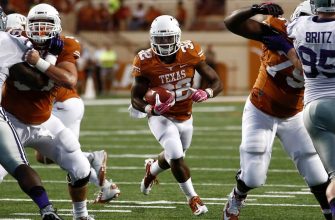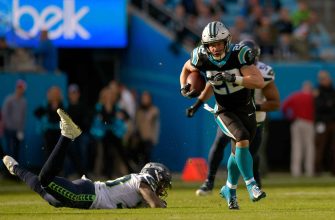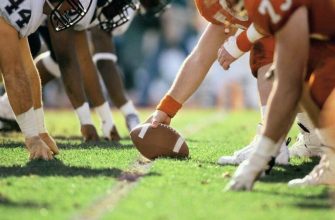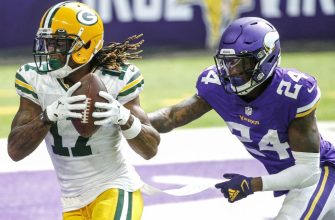A sack in football occurs when the quarterback is tackled behind the line of scrimmage before he can throw a forward pass. This results in a loss of yards for the offensive team. A sack is a big play for the defense, as it stops the offense’s momentum and can force them into difficult down and distance situations.
The sack is an official statistic awarded to the defensive player who tackles the quarterback. It was first recorded as an official stat in 1982 by the NFL. Since then, pass rushers have strived to rack up high sack totals each season.
Origins and History
The quarterback sack has been an integral part of football for decades, but it did not become an officially recorded statistic until 1982.
Before sacks were officially tracked, players like Deacon Jones were renowned for their pass rushing skills. Jones is credited with coining the term “sack” to describe tackling the quarterback behind the line of scrimmage. While his career spanned from 1961-1974, Jones’ sack numbers are estimated unofficially since they were not recorded. He is attributed with amassing 173.5 career sacks, including an incredible 26 in one season in 1967.
Once the NFL finally began officially tracking sacks in 1982, yearly sack leaders could be accurately recorded. Since then, players like Michael Strahan, Jared Allen, Justin Houston, and Aaron Donald have set single season sack records. The introduction of the sack as an official stat revolutionized pass rushing and continues to be a key metric for defensive player performance.
How Sacks Happen
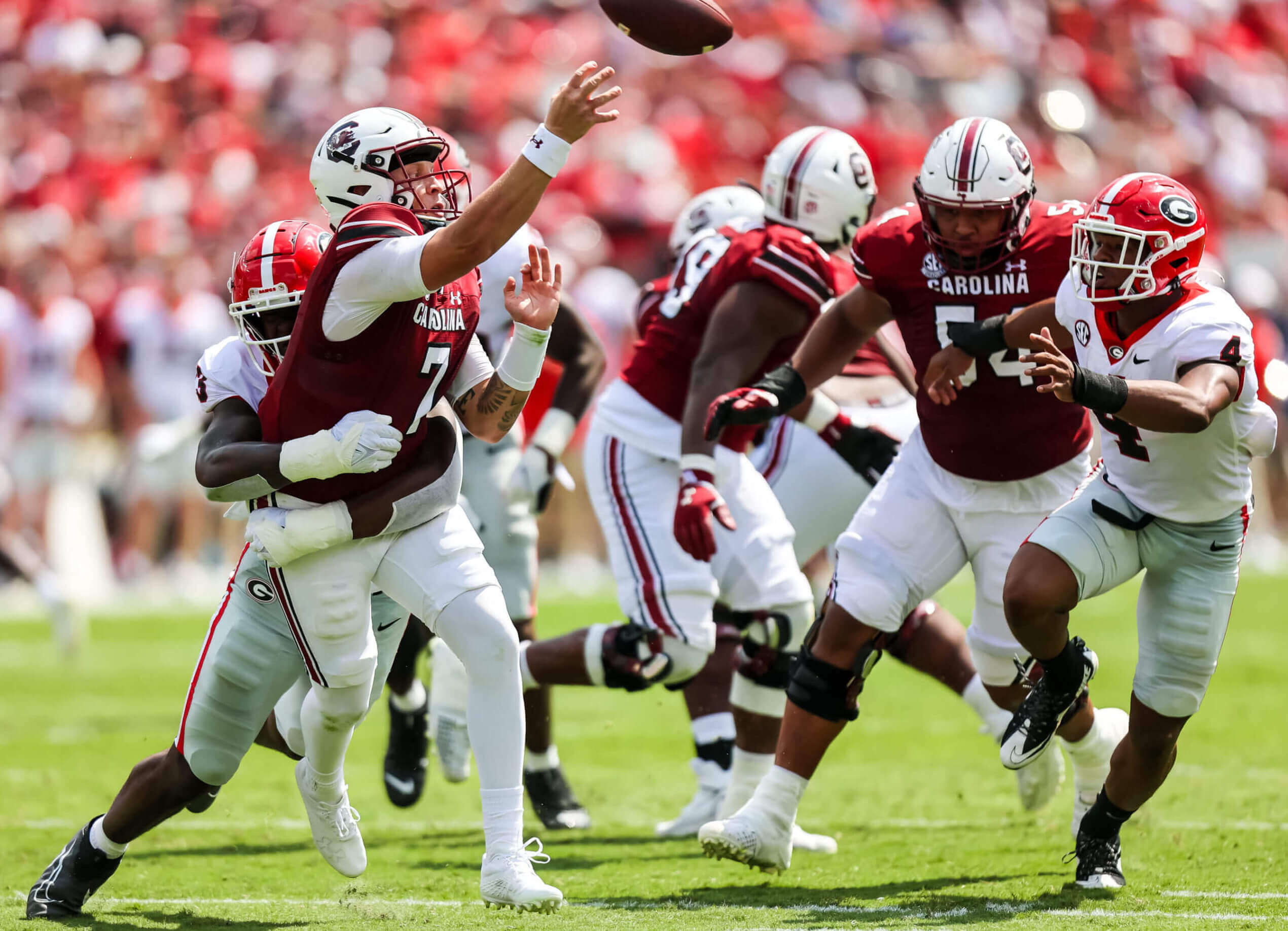
A sack occurs when a defensive player tackles the quarterback behind the line of scrimmage before he can throw a forward pass or hand off the ball. This usually happens when the offensive line fails to adequately protect the quarterback from the pass rush.
There are a few ways a defensive player can get a sack:
-
The defensive line beats the offensive line with a speed or power rush and gets into the backfield quickly to tackle the quarterback. Defensive ends and tackles specialize in rushing the passer and getting sacks.
-
Blitzing linebackers or defensive backs shoot a gap in the offensive line and get a free run at the quarterback. Blitzes are designed to overwhelm blockers and create a numbers advantage for the defense.
-
The quarterback drops back to pass but cannot find an open receiver. The coverage in the secondary is too tight and the quarterback is forced to hold onto the ball, allowing more time for the pass rush to get to him.
-
The quarterback scrambles out of the pocket trying to make a play but is chased down and tackled behind the line by a speedy linebacker or defensive back before he can throw.
-
There is a botched snap between the center and quarterback, resulting in a loose ball that the defense recovers behind the line of scrimmage.
Sacks require teamwork – the secondary has to cover well, and the defensive line has to beat their blockers. But individual pass-rushing skills are critical for defenders to beat their man and finish the play with a sack.
Why Sacks are Important
Sacks are one of the most impactful defensive plays in football, often changing the momentum and outcome of a game. When a defensive player tackles the quarterback behind the line of scrimmage before he can throw the ball, it results in a loss of yards for the offense as well as a loss of down. This can force the offense into long third downs, resulting in punts or field goal attempts. Sacks also have the potential to cause fumbles, which can lead to defensive touchdowns or excellent field position.
By getting to the quarterback, the defense rushes throws and disrupts the timing of the passing game. Defenses that rack up high sack totals tend to have better performance in points allowed, yards allowed, and defensive efficiency. Simply put, consistent quarterback pressure and sacks make life extremely difficult for opposing offenses. Elite pass rushers who pile up double-digit sacks per season are among the most valuable defensive players in the game.
Notable Sack Leaders
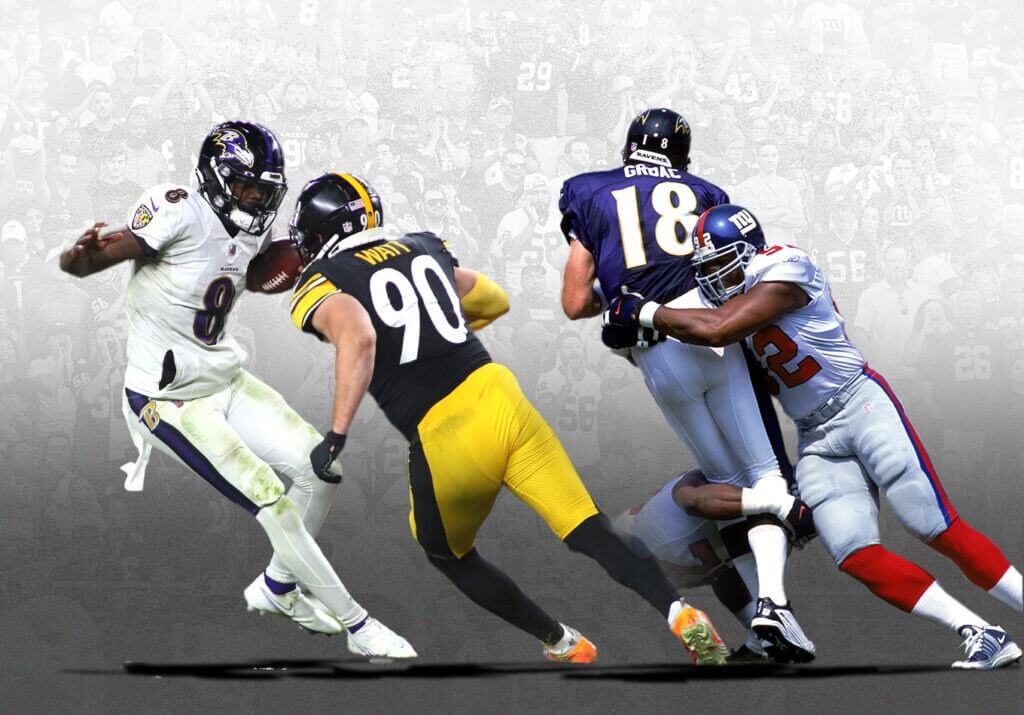
The NFL has kept official sack records since 1982. Since then, a number of elite pass rushers have separated themselves from the pack in amassing huge career sack totals.
Bruce Smith sits atop the all-time list with 200 career sacks during his 19 NFL seasons. The Hall of Famer was a dominant force for the Buffalo Bills, leading the league in sacks twice.
Reggie White comes in second with 198 sacks in 15 seasons. White was a key member of the legendary Green Bay Packers defenses in the 1990s and also spent time with the Eagles and Panthers. His 21 sacks in 1987 remains tied for the single season record.
Kevin Greene ranks third all-time with 160 career sacks accrued over 15 seasons. Greene was a 5-time Pro Bowler and 3-time First Team All-Pro selection known for his intensity and passion.
Julius Peppers (159.5 sacks) and Chris Doleman (150.5 sacks) round out the top five. Other notable names high on the career sacks list include Jason Taylor, Michael Strahan, Richard Dent, John Randle, Lawrence Taylor, and many more.
While the sack did not become an official stat until 1982, many all-time greats like Deacon Jones and Jack Youngblood were dominant pass rushers well before that time. Unofficial sack totals from earlier eras would certainly shuffle the record books.
Sack Records
The official NFL single-season sack record is 22.5, held jointly by Michael Strahan in 2001 and T.J. Watt in 2021. Strahan set the record as a defensive end for the New York Giants, while Watt matched it as an outside linebacker for the Pittsburgh Steelers.
Some of the other notable NFL single-season sack leaders include Jared Allen with 22 sacks in 2011, Justin Houston with 22 sacks in 2014, and Mark Gastineau with 22 sacks in 1984.
The NFL career sack record belongs to Bruce Smith, who recorded 200 total sacks during his 19 seasons with the Buffalo Bills and Washington Redskins. Reggie White ranks second with 198 career sacks, while Kevin Greene finished third with 160 career sacks.
Sacks vs Quarterback Hits
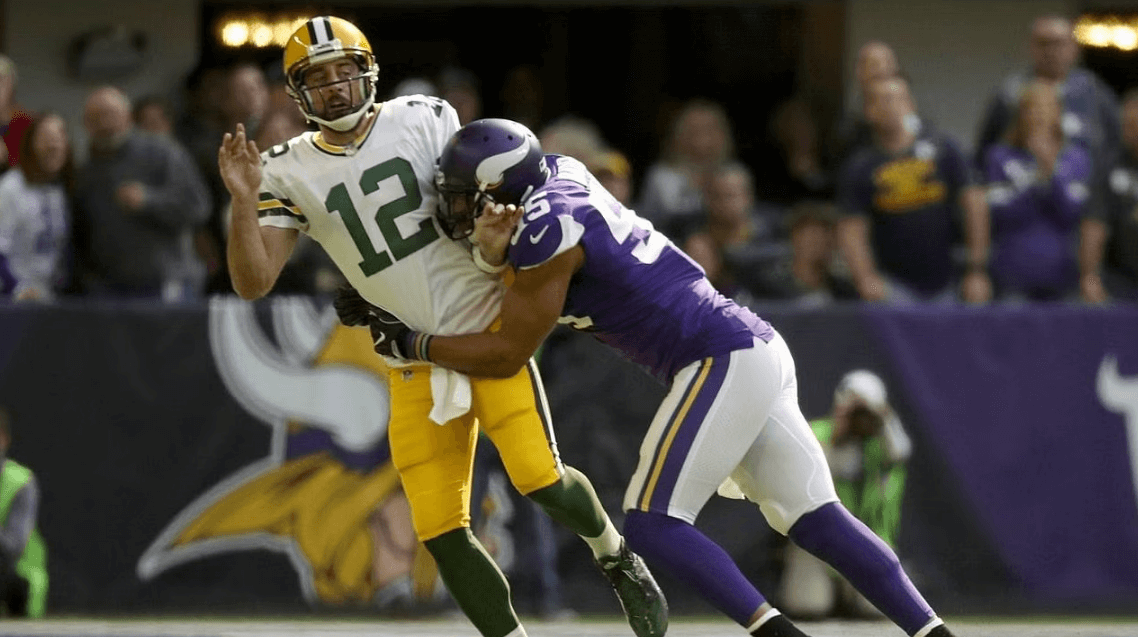
A sack occurs when the quarterback is tackled behind the line of scrimmage before he can throw a forward pass. This results in a loss of yards for the offensive team.
On the other hand, a quarterback hit refers to when the quarterback is hit after he releases the ball on a passing play. He is not tackled to the ground like on a sack play, but still takes a big hit from a defensive player.
The main difference is that on a sack play, the quarterback goes down and the play results in lost yardage. On a quarterback hit, the quarterback gets hit but still completes the pass, so there is no loss of yards. Still, cumulative quarterback hits can take a toll on a quarterback over the course of a game or season.
Sack Celebrations
Some of the most creative and memorable moments in football happen after a sack. Players have celebrated sacks with elaborate dances, props, and stunts. Fans love a creative sack celebration, and it has become an opportunity for players to show off their personalities.
One of the most iconic sack dances belonged to former linebacker Takeo Spikes. After taking down quarterbacks, Spikes would perform “The Shake,” gyrating his hips in a silly dance that enthralled crowds.
Another classic celebration came from DeMarcus Ware. Ware would stand tall like Frankenstein’s monster after sacks, frozen in place with arms straight out. Teammates had to come shake him out of it.
Jared Allen brought calf roping from the rodeo into the end zone. After sacks, he’d pretend to rope the QB like a calf and throw his hands up to excite the crowd.
And then there’s Shawne Merriman’s famous “Lights Out” dance. With fists clenched, Merriman mimicked flipping a light switch off after his sacks.
Some players have gotten creative with props too, bringing out mock championship belts and even pretending to row a boat. Sack celebrations give players a chance to show their true personalities.
Impact on Fantasy Football
Sacks play an important role in fantasy football scoring for both defenses and quarterbacks. Most fantasy leagues award points to defenses for sacks – usually 1 point per sack. This rewards defenses that are adept at pressuring the quarterback and racking up sacks.
On the flip side, quarterbacks are negatively impacted by taking sacks in fantasy scoring. While sacks do not directly deduct points from quarterbacks, they result in lost yardage which cuts into a quarterback’s passing yards and overall fantasy production. A quarterback who takes a lot of sacks will score fewer fantasy points than a quarterback who avoids sacks by getting rid of the ball quickly or scrambling effectively.
Some fantasy leagues modify quarterback scoring by deducting points directly for sacks taken. This more severely penalizes quarterbacks for taking sacks and benefits those who are better at avoiding them. When weighing quarterbacks for fantasy drafts or start/sit decisions, sacks are an important statistic to consider along with passing yards, touchdowns, and interceptions.
Conclusion
Sacks are one of the most exciting and impactful plays in football. They can completely change the momentum of a game by forcing a turnover or taking the opposing quarterback out of their rhythm. Throughout the history of the sport, elite pass rushers who rack up high sack totals have been some of the biggest stars and difference makers for their teams.
While sacks were not an officially recorded stat until 1982, players like Deacon Jones were already making their mark by bringing down quarterbacks behind the line of scrimmage. As sack totals started being tracked, legends like Reggie White and Bruce Smith set new standards with their ability to consistently take down QBs. Today, players like Aaron Donald and T.J. Watt continue to chase sack records and cement their legacies.
Sacks remain such an important stat because of how much they can disrupt offenses. Taking down the quarterback for a loss kills drives and forces punts. Strip sacks that create turnovers can completely swing a game. Even sacks that just lead to third-and-long situations can get defenses off the field. That’s why elite pass rushers are so valued in today’s NFL and racking up sacks is a clear path to stardom.
Overall, the sack is one of football’s most exciting and influential plays. Tracking sack leaders and records is a big part of football history and analysis. Sacks will continue to make a major impact for defenses trying to slow down modern offenses led by star quarterbacks. It’s safe to say the sack will maintain its prominence as long as football is played.


